Waterless printing technology (below)
Waterless printing can protect water resources. For example, a Swiss printing company has introduced the world's first generation of waterless web presses, which saves 250,000 liters of water per year. Most of the water needs to come from a nearby lake. It is the source of drinking water for nearly 10,000 people.
(4) Protection of forest resources. The production of a ton of paper requires the use of 17 large trees, which can provide exactly 20 papers per day for reading. Destroying forests, while providing raw materials for papermaking, has also destroyed the natural habitats of countless animals and plants and seriously damaged the ecological balance.
As the waterless printing process, the color can quickly come up, you can immediately register, and maintain the consistency of the color during the printing process, compared with the traditional printing, the book saves 30% to 40% of the paper. In addition to protecting forests, production costs are greatly reduced.
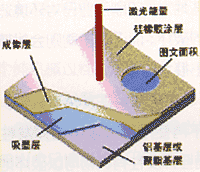
When workers use highly volatile solvents to detect blankets, the damage is most serious.
Apparently, waterless printing does not use a dampening system, eliminating toxic substances in the solvent of washing blankets. It not only protects air, soil, and water, but also protects us ourselves—humans.
2. Comparison between waterless printing and traditional printing (1) More vivid and bright colors. As shown in the figure, a waterless printing is compared with a traditional printed one.
Water-free printed products have a great contrast. That is, the darker parts are darker and the highlights are brighter. Can print printing quality that cannot reach traditional printing.
(2) Color reproduction is more summery. as the picture shows:
Waterless printing produces high ink density. Therefore, under the same number of screens, waterless printing products are richer and more real than traditional printing products.
(3) Better resolution. Now to compare, it is clear that waterless printing prints look sharper and more abundant. Waterless printing uses 300 lines/inch screened lines, while conventional printing uses 175 lines/inch.
Waterless printing provides higher color saturation and greater print contrast, reproducing more detail. In addition, the number of 300 lines/inch screen lines eliminates the moiré that typically occurs with 175 lines/inch or 150 lines/inch.
(4) Larger gamut space. Waterless printing is better. Because of its small network expansion, the details of the dark tone meter can be clearly expressed. In particular, the density of the ink on the waterless printing product is large, the color space can be expanded, and more saturated colors can be printed.
The figure below shows the use of the SPM100 for each of the three kinds of printed gamut spaces measured for the densitometer. The traditional printing city space is obviously smaller than water-printed city space.
Due to the high density of ink, the color space perimeter of waterless sheet-fed printing is 21.3% longer than that of traditional web printing, and 13% longer than that of traditional sheet-fed paper.
Average ink density in the field
Color Traditional Printing Waterless Printing Black 1.632.10 Green 1.57 Product 1.351.70 Yellow 1.101.13Table 1: Comparison of Average Ink Density
(5) Waterless printing dots have a small spread and uniform color. All customers want high ink density and good color reproduction. Using traditional printing methods, ink-water balance has a great influence on the quality of prints.
This is because the fountain solution dilutes the ink and spreads the dots into the paper. This kind of network expansion phenomenon is the expansion of outlets. When printing with the unwatermarked version of PEARL dry and Troray from Presstek, dot gain will be reduced.
For traditional printing, the maximum number of screens is limited to 200 lines per inch due to dot gain. In waterless printing, there is no fountain solution, dot gain is greatly reduced, and the number of screen lines has been greatly improved. Toray's non-watermark version of the screen can generally be 300 lines per inch, and even some waterless printers use 400 lines/inch screens.
Another factor that reduces dot gain is the waterless version of the flat-concave structure. The non-watermark version is not an ink-absorbing plane, but a "ink-absorbing hole" structure. These "ink-absorbing holes" provide a supporting net wall when the ink is transferred from the printing plate to the blanket cylinder.
Waterless printing can reduce the dot enlargement by 50% compared with traditional printing, so it can reproduce more picture subdivisions, that is to say, it can be printed in the dark tone and intermediate tone part of the picture to be more layered.
Because waterless printing can print higher ink densities, waterless printing has a larger color space than traditional printing. The average ink density of waterless printing is 20% higher than traditional printing. With high-line printing, you can transfer more ink to the paper and increase the gamut space. High ink density, small dot gain, and large picture contrast are naturally better than traditionally printed prints.
(6) Wide range of printing. In addition, waterless printing can also print high quality prints on offset paper and recycled paper. Because there is no fountain solution, the paper is less deformed and the registration accuracy is higher.
Traditional printing is a headache for non-absorbable substrates such as plastic films, metals, and synthetic paper. Since these substrates do not absorb the fountain solution, the fountain solution can only be returned to the ink fountain along the ink path, causing the ink to be heavily emulsified and causing great changes in printing color.
Waterless printing provides quality assurance for printing on these substrates. Finally, waterless printing does not require ink and water balance, eliminating the main factors that affect the color change of printed products. Therefore, waterless printing maintains color consistency throughout the printing process.
(7) Waterless printing greatly increases productivity. The balance of ink and water in traditional printing has greatly affected production efficiency. Changes in the ink balance can cause ink emulsification, resulting in color changes, long time required for the ink to dry on the print, and problems such as ink bars.
Traditional printing press operators need a lot of experience to control these complex situations. Not only must have a deep understanding of the mechanical part of the machine, but also need to have a strong sense of aesthetics to ensure that the color does not change during the printing process. Also need to have a certain chemical basis, you can properly control the ink balance, need to understand the water hardness, PH value, conductivity, alcohol content, water in the degree of water and water absorption of the return and so on.
Waterless printing eliminates ink-water balance and reduces the printing process from a chemical/physical process to a purely mechanical process. Therefore, it also eliminates many factors that cause changes in the process.
At the beginning of printing, there is no need to obtain ink-water balance, so the finished product is printed at a high speed. The color adjustment method in the printing process is generally the same as the traditional printing.
Without the fountain solution, the printing preparation time is shortened, the productivity is improved, the downtime caused by the fountain solution is reduced, the color can be maintained in the printing process, and the ink drying time is short.
Traditional printing and waterless printing are printed at the same speed at the same time. Waterless printing is 21% longer than traditional printing, and the average printing preparation time is reduced by 28% and the total printing number is 54%.
The era of waterless printing is coming to us. Heidelberg DI, which uses waterless printing, has a total installed capacity of nearly one thousand units in Quanzhu. The advantages of waterless printing in the production process, especially the environmental pollution it has reduced to The smallest is impressing or impressing the hearts of printing manufacturers.
Bird Supplies
Birds have been kept as pets for at least two thousand years. Some people keep them because of their [songs" – other people enjoy the way many birds mimic human voices – and other people again like the playful antics of many bird species.
We started in the pet industry three decades ago as bird suppliers to the trade. Since the early days we have been supplying accessories, food etc for pet birds, poultry and wild birds. So we do have a comprehensive knowledge of all facets involved in bird keeping.
We stock metal bird cages – essential to keep your pet enclosed. Our cages come in a huge array of styles, sizes and colours.
For wild birds, we have small wooden Bird Houses and rattan bird nests. Great to watch birds nesting in the garden.
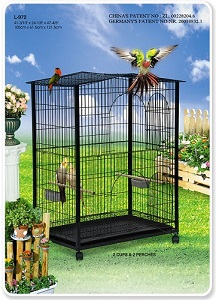
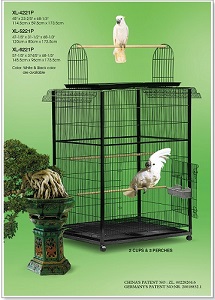
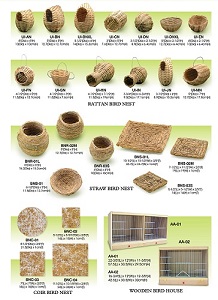
We have a very big range of bird feeders – metal and plastic. We also supply food products – millet sprays – calcium blocks and cuttlefish bones.
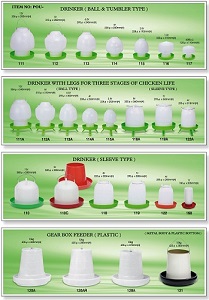

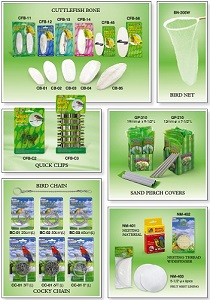
Our massive range of bird accessories include – bird nets, cuttlefish bone clips, sand perch covers, bird chains, nesting material, perches – plus other lines.
For poultry, we have many sizes of plastic, metal and aluminum drinkers and feeders for farm or home use.
We also have many accessories for pigeons, such as plastic carriers for competitions, aluminum baskets, pigeon leg rings etc.
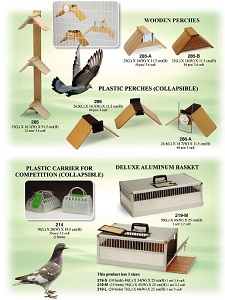
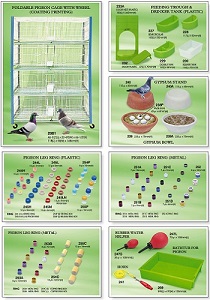
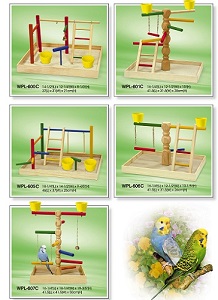
For you and your birds enjoyment, we have wooden bird`s playgrounds, wooden, acrylic and plastic bird toys, bells and mirrors. Rope bird perches, rope bird toys and ladders – a huge range of toys.
Order Quantity:
One of our advantages in supplying you our Bird Supplies is that we have been in the business for almost four decades. We have a massive range of quality products. Our advantage is that we can supply a very large variety of products to you in smaller volumes than you may be required to purchase elsewhere.
We are flexible in order volume - orders can be supplied LCL or full containers. MOQ can be discussed accordingly.
OEM Service:
Many of our customers have great ideas for Bird Supplies. If you have an idea, we are happy to discuss details with you, including volumes, costs and OEM etc. We can also help with developing products.
Bird Supplies
Bird House,Decorative Bird House Kits,Birdhouse Kits,Wooden Bird House Kit
PERCELL PET SYSTEM CO., LTD , http://www.percell-pet.com